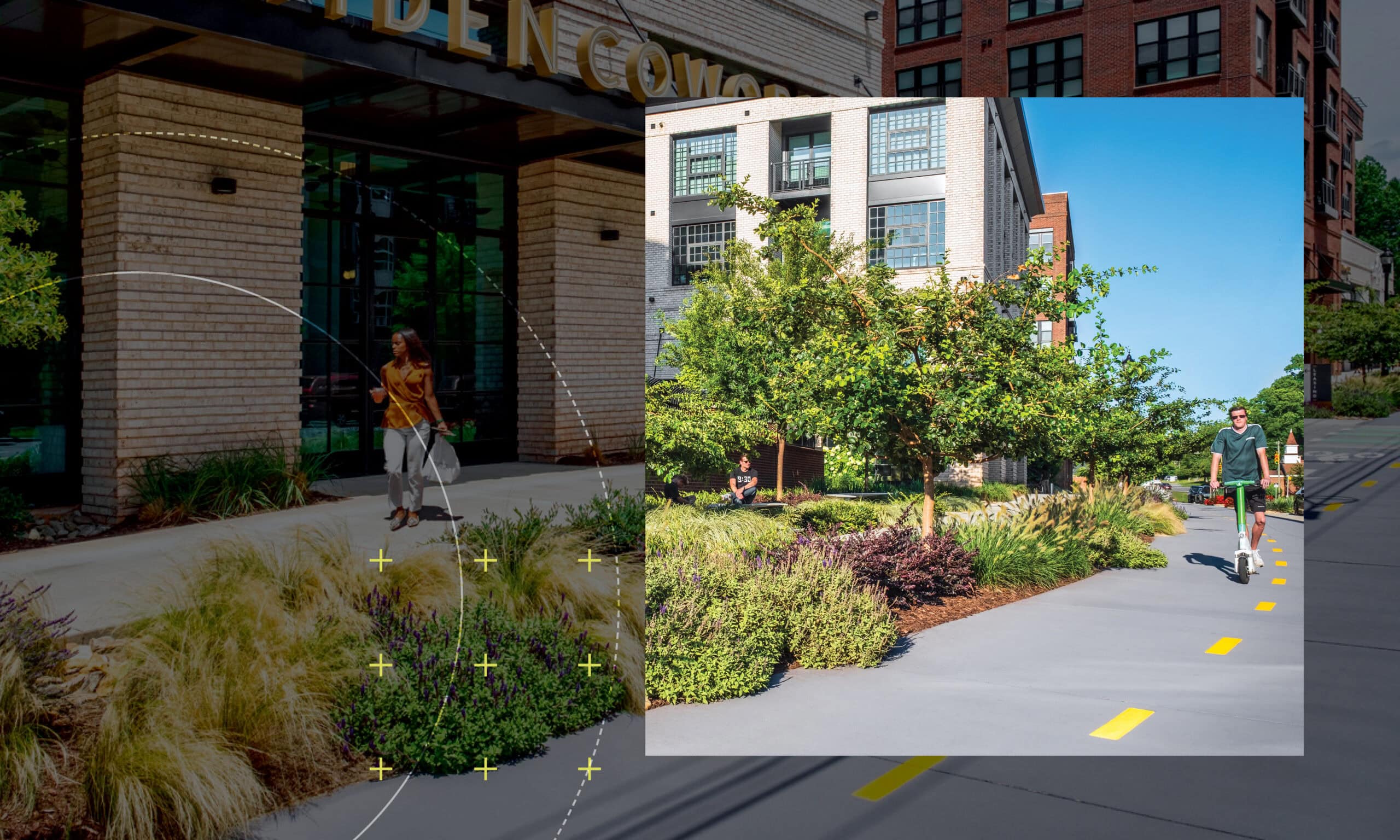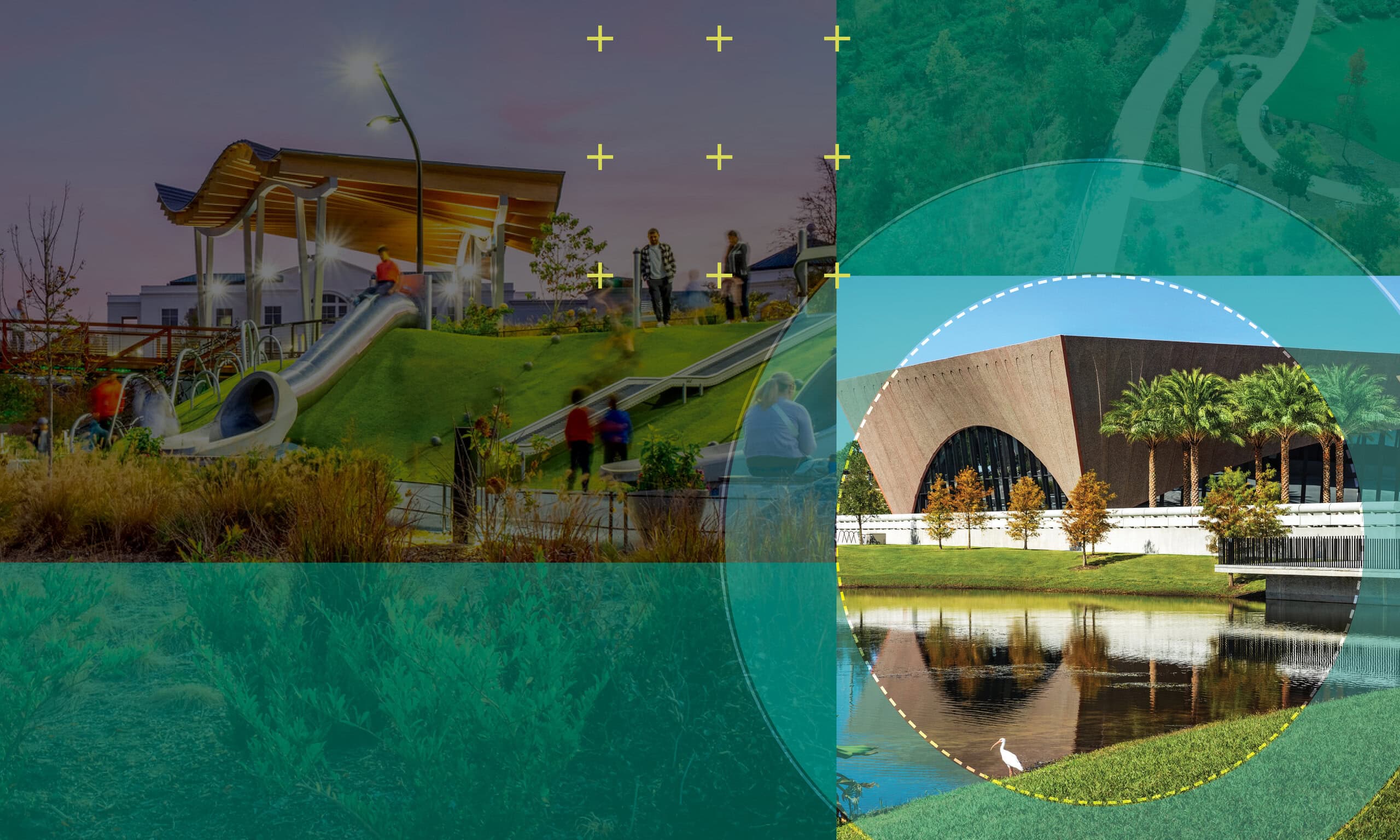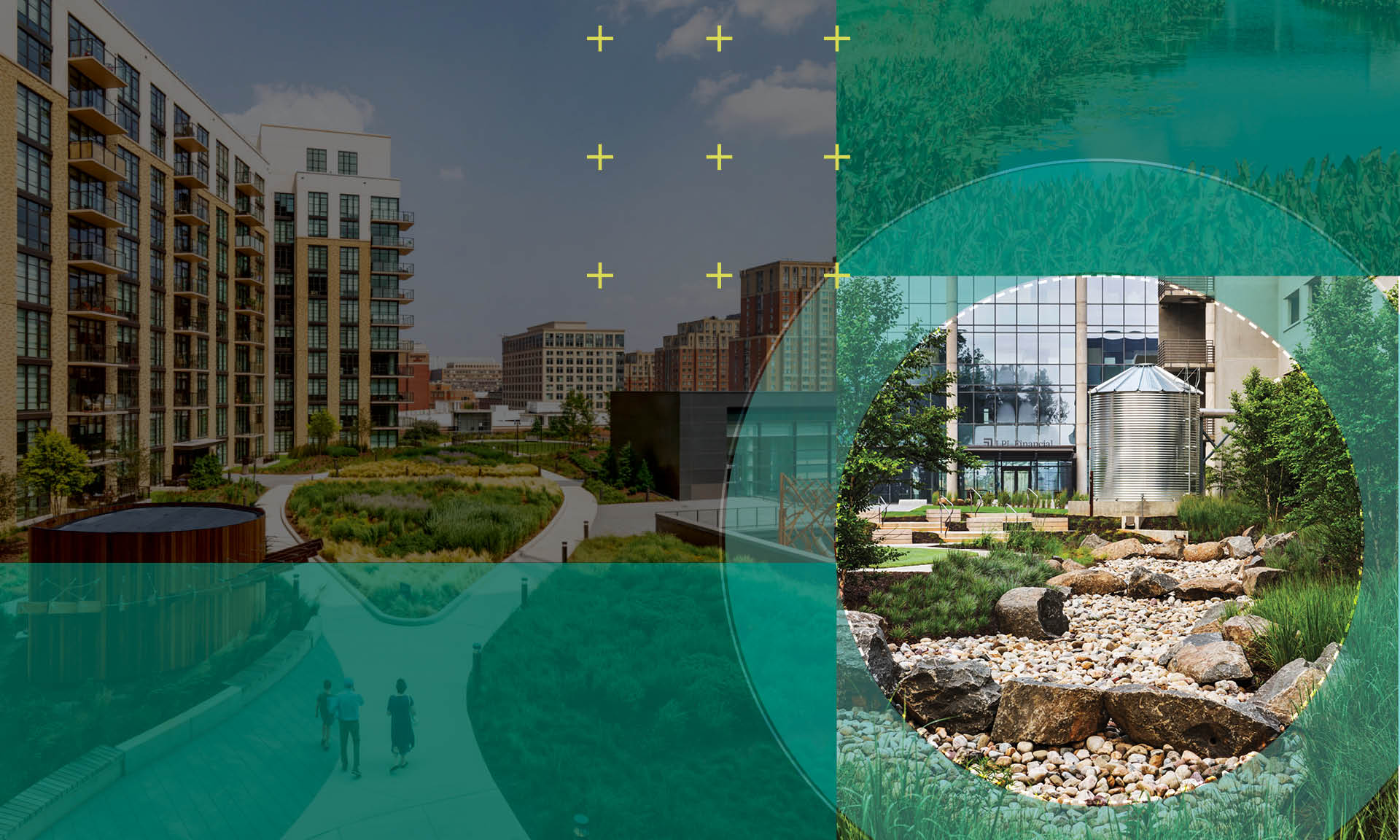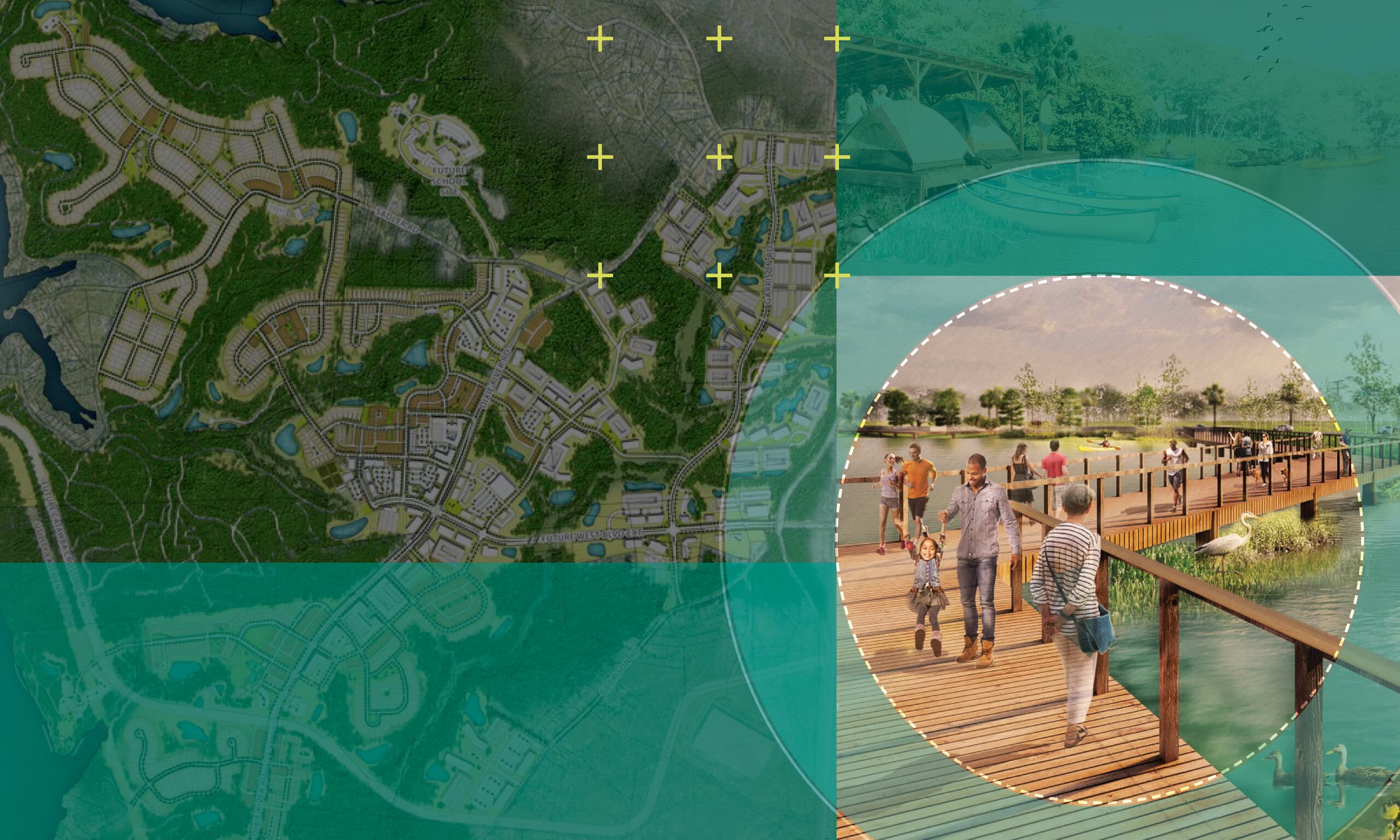At LandDesign, our clients often ask how much street design will need to change to prepare for the future of autonomous vehicles (AVs).
Our response? Not much.
Why? Because even as technology evolves, the fundamentals of great street design remain the same—and it’s the technology that should adapt to human environments, not the other way around.
Streets have always been more than conduits for cars; they are shared spaces for people walking, biking, driving, gathering, and doing business. Active edges, landscaping, visual variety, narrower lanes, and tighter curb radii signal drivers to slow down, stay alert, and respect others sharing those spaces.
How Today’s Autonomous Vehicles Respond
Today’s autonomous fleets, like Waymo’s vehicles in several U.S. cities, already use LiDAR, cameras, radar, and computer vision to read those same cues and adjust their behavior much like humans. While these systems continue to encounter limitations in complex urban settings, if cities, customers, and the industry continue to push for advancement, we can expect the technology to steadily improve and better adapt to the realities of human environments.
Avoiding the Risk of Technology-First Design
“Great streets are economic engines because they’re also great places to walk, bike, and just hang out,” said Beth Poovey, Principal at LandDesign. “When people feel comfortable moving at a human pace, they linger—supporting local businesses and connecting with each other. Technology should strengthen, not disrupt, that human rhythm.”
Where we see risk is in the temptation to shift from human-focused to technology-focused design, abandoning the qualities that make streets great to avoid obsolescence in an AV future. There’s no need to create ‘minimalist’ intersections that strip away trees, overhead elements, or pedestrian crossings just to make it easier for sensors to ‘read’ their surroundings. Nor should we expect people to rigidly ‘follow the rules,” always crossing at marked crosswalks or staying perfectly within bike lanes. AVs must adapt to the realities of urban life and anticipate sometimes unpredictable human behavior, not the other way around.
Opportunities for Smarter Fleets and Street Space
At the same time, there are opportunities ahead. Much of our current street design is driven by the needs of the largest and least nimble vehicles like fire trucks, delivery trucks, and buses, that demand wide lanes and large curb radii. As these fleets become AV-assisted or fully autonomous, they could navigate more precisely and operate safely in tighter spaces. That precision could open the door to narrower lanes, smaller curb radii, and more flexible curb uses, freeing valuable space for plazas, landscapes, sidewalks, trees, and public life. While the near future will still mix human-driven and autonomous vehicles, smarter fleets could eventually help cities design for ‘just enough space’ instead of overbuilding for the biggest outliers.
The Enduring Measure of a Great Street
Traditionally, transportation planning has focused on efficiency: getting people from point A to point B as quickly as possible. But as our Business Development Director (and long-time transportation planner), Justin Schor, reflected, “Exposure to LandDesign’s philosophy on street design has shifted my thinking. It’s no longer just about the “how” of movement–it’s about the “why.”
As technology changes how we move, the true test of a street will remain the same: Does it make life better for all people who use it? At LandDesign we believe that great streets are not just conduits for traffic but experiential places where movement, commerce, and community life come together.








